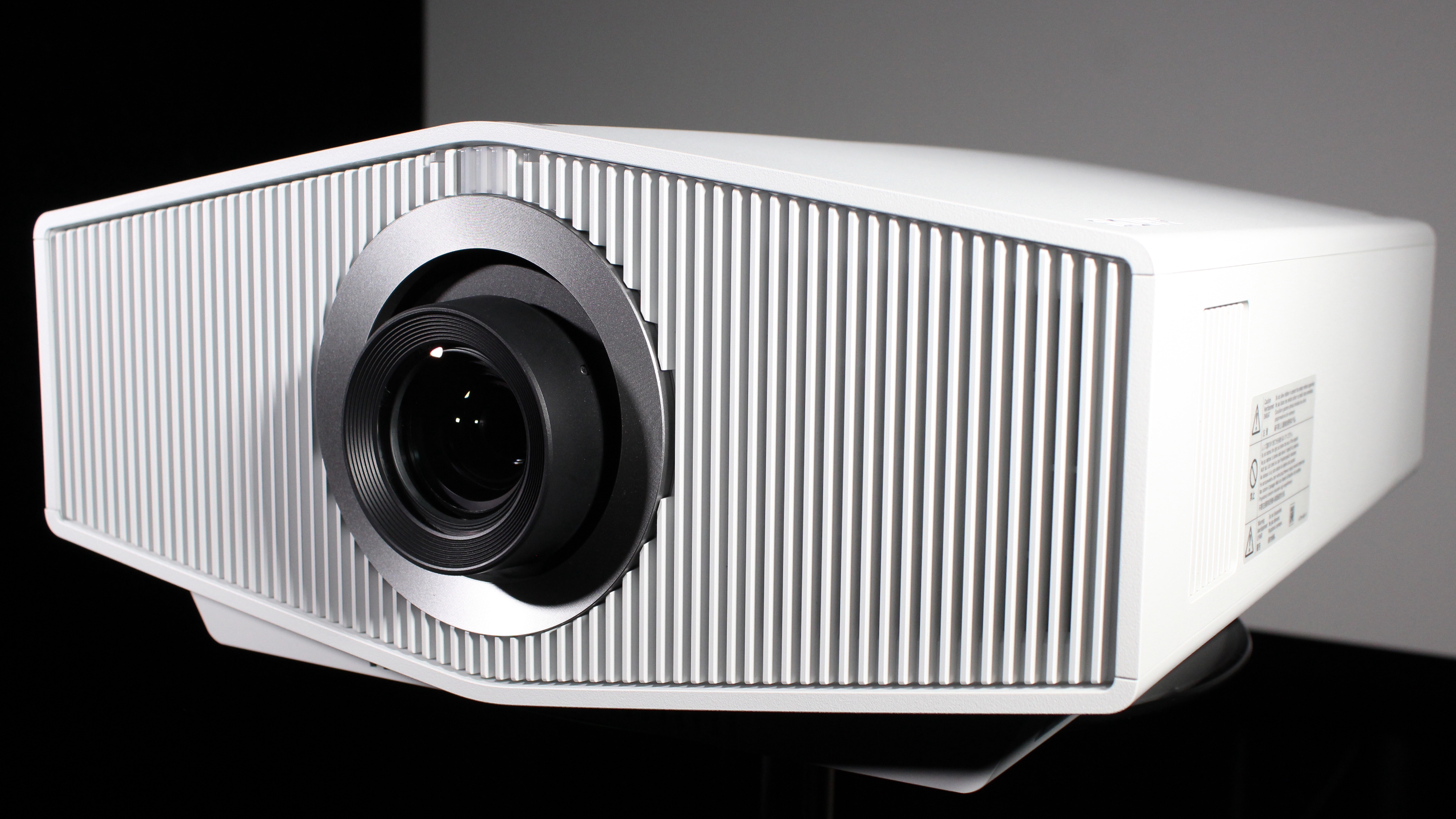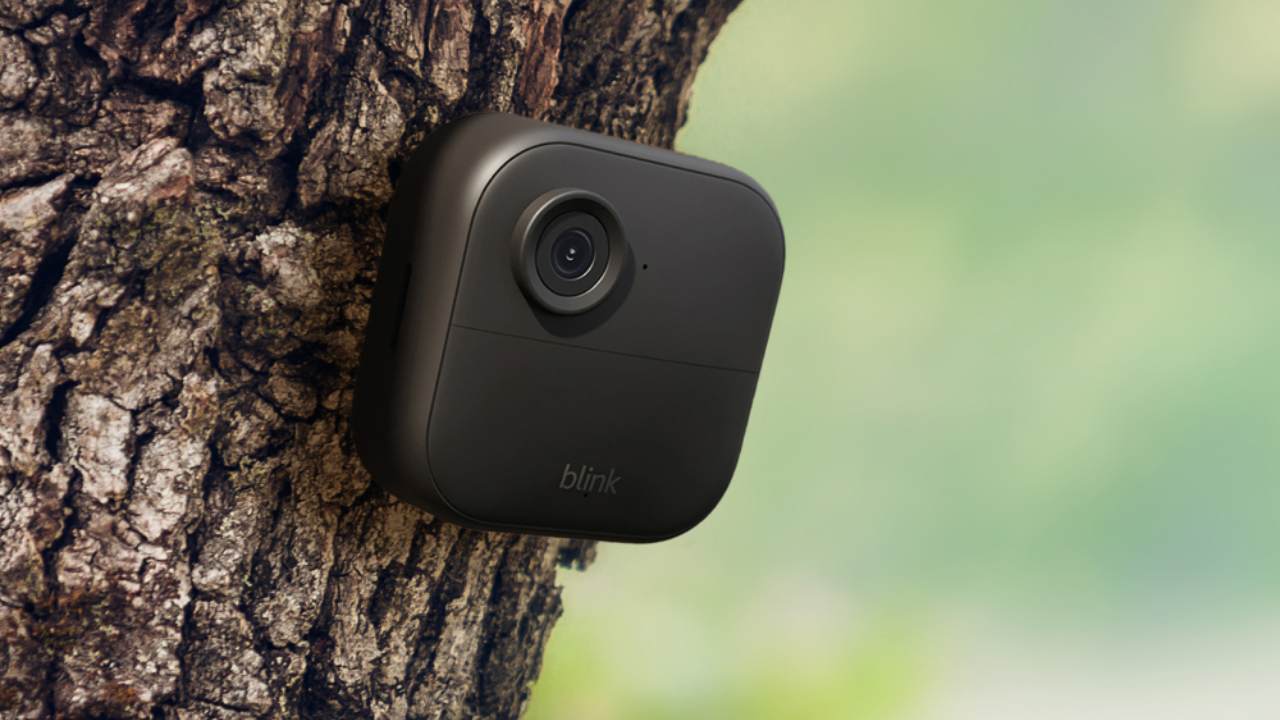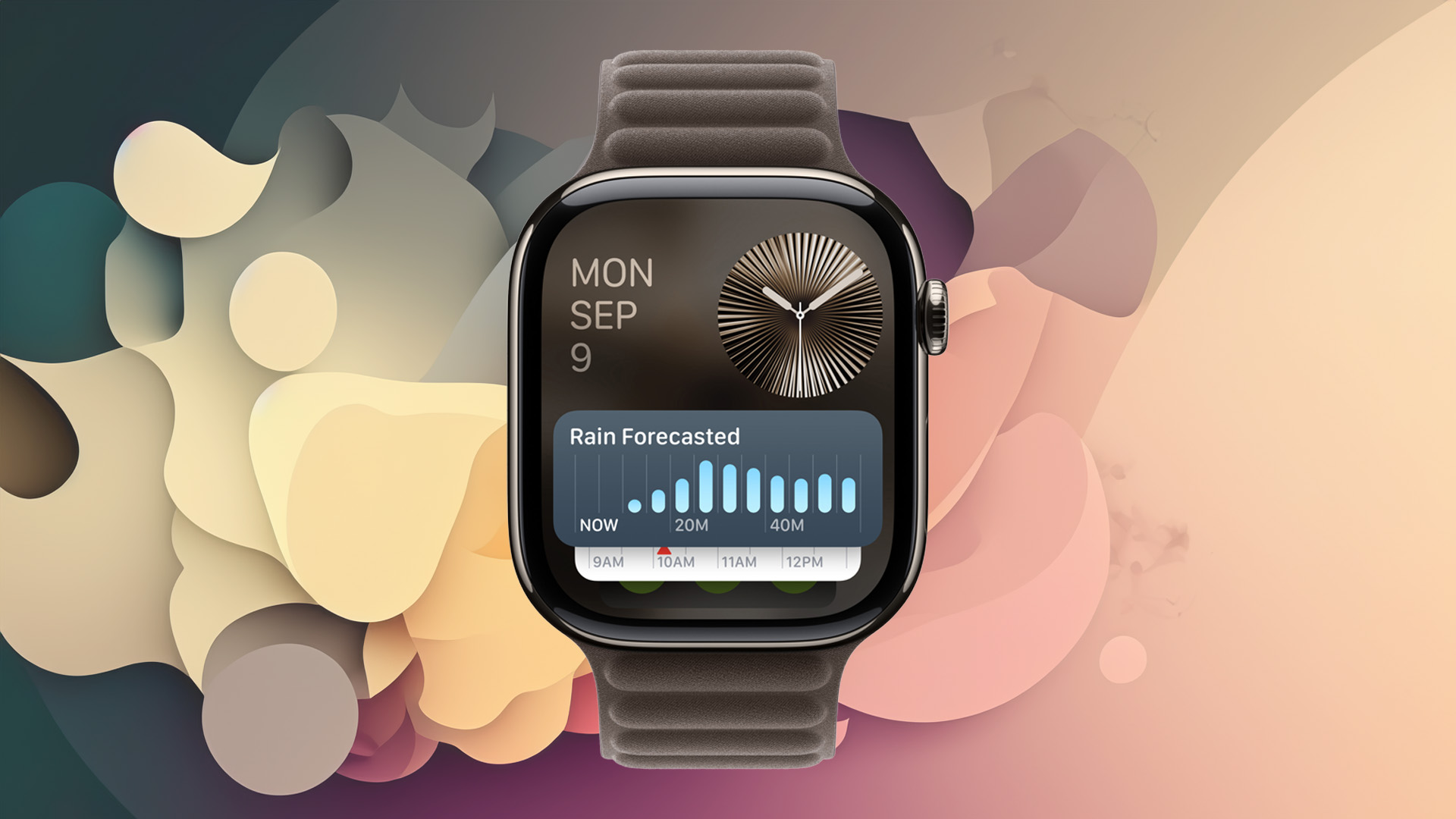Sony VPL-XW5000ES review: an affordable native 4K laser projector
Sony’s latest projector sets a new entry point for native 4K laser-powered beamers


The Sony VPL-XW5000ES is an accomplished projector that represents the entry-point for native 4K laser beamers at less than half the price of its nearest competitor. Sony has dropped a few features, but peerless processing, fluid motion, and a solid HDR performance make it well worth your while.
-
+
Detailed native 4K images
-
+
Long-life laser light source
-
+
Good HDR performance
-
-
Manual lens controls
-
-
No HDMI 2.1 inputs
-
-
No 3D support
Why you can trust T3

The Sony VPL-XW5000ES is a native 4K projector that uses a long-life laser light source to deliver bright and detailed images at a very competitive price-point. But is it any good? That's what we'll be getting to in this review.
To help keep the costs down Sony doesn’t include 3D, HDMI 2.1 or motorised lens controls, but still offers class-leading processing, highly accurate images, peerless motion handling, and a solid HDR performance.
SONY VPL-XW5000ES REVIEW: PRICE & RELEASE DATE
The Sony VPL-XW5000ES is priced at £5,999/$5,999/AU$9,990, and while that’s certainly more than a little spare change, it’s very competitive when you consider the next nearest native 4K laser projector is the JVC DLA-NZ7, which retails for £11,499/$10,999/ AU$16,000. The widget below will show you updated pricing.
SONY VPL-XW5000ES REVIEW: FEATURES & WHAT’S NEW?

The Sony VPL-XW5000ES uses a new and smaller 0.61-inch SXRD chipset, which delivers native 4K (3840 x 2160) images while also keeping the costs down. It has a refresh rate of 120Hz, although due to the lack of HDMI 2.1 only supports that rate at resolutions up to 2K (1920 x 1080). So that's both good and bad news, depending on what you intend to watch (or how you game).
The XW5000 can illuminate a big screen thanks to a laser phosphor light source, with a claimed peak brightness of 2,000 lumens and claimed lifespan up to 20,000 hours (no, we've unsurprisingly not been able to test it for that long, sorry). That basically means you could watch a movie a day for the next decade without worrying about the image dimming.
Sony includes wide dynamic range optics, and promises that its Triluminos Pro algorithm will deliver deeper blacks, more saturated colours and improved contrast ratios. Sony’s latest X1 Ultimate processor also offers advanced image processing and real-time optimisation of the picture.
There’s also object-based HDR (high dynamic range) remastering and dynamic HDR enhancements, with support for HDR10, HLG, and even IMAX Enhanced content. Finally, there’s Motionflow frame interpolation for fast-paced sports action, and a low-latency game mode for a reduced input lag.
In terms of missing features, the XW5000ES has no motorised lens controls and thus no lens memories for wider screens. There’s also no support for 3D, and the lack of HDMI 2.1 inputs not only means there’s no 4K/120Hz, but also no support for HDR10+ with dynamic metadata either.
SONY VPL-XW5000ES REVIEW: PERFORMANCE

The Sony VPL-XW5000ES delivers impressive native 4K pictures bursting with fine detail. The overall uniformity and geometry is also good. The laser light source generates enough brightness to illuminate larger screens, and can also handle rooms with white walls or a lot of ambient light.
The smaller SXRD chipset and hybrid lens result in images that could be sharper, but sophisticated Reality Creation enhancement algorithms improve the perceived resolution by defining details that might otherwise appear soft without introducing any unwanted processing artefacts.
The X1 Ultimate processor is very impressive, and with high-quality sources you’ll be rewarded with a picture that makes full use of the projector’s more-than-eight-million pixels, producing images that are fine-tuned so they appear clean, detailed and free of unwanted artefacts.
Sony’s other strength is its motion handling, which appears fluid and free of judder, even without engaging Motionflow, although for fast sports this setting can be beneficial. For movies, there’s also the True Theatre mode that remains faithful to the cinematic 24p frame rate.
The Bright Cinema picture mode adds extra pop, but it’s not as accurate as Reference, resulting in a bluer greyscale and more saturated colours. Reference gets close to the industry standards, although if you’re spending this many thousands of your hard-earned cash, then you should really get a professional calibration.
You can adjust the laser brightness, although the higher the setting, the louder the fan noise to dissipate the extra heat. The Dynamic Control adjusts contrast, which can improve some darker scenes at the expense of brightness, but this does tend to crush some of the shadow details.
The XW5000 supports HDR10 and HLG, but not HDR10+ due to the lack of HDMI 2.1 inputs. Despite Sony’s claims of wide dynamic range optics capable of reaching 95% of DCI-P3, in our testing we only measured 83%. On the plus side, however, the tone mapping tracks the industry target.
Speaking of tone mapping, Sony’s Dynamic HDR Enhancer performs frame-by-frame analysis of the incoming HDR signal, adjusting the tone mapping dynamically through pixel processing and laser power. The results can be good, but often require tweaking to get the best HDR picture.

The XW5000 performs best with brighter HDR content, i.e. is dependent on source quality, as that's where the combination of the laser light source and effective tone mapping deliver pictures that are punchy and detailed. The snowy vistas in War for the Planet of the Apes look great, for example, with bright whites that are free of clipping.
Despite the XW5000’s limited gamut, the colours in Elvis really pop when combined with the bright highlights and precise tone mapping. The montage of the movie's Las Vegas concerts is a riot of colour as ‘The King’ parades around in a range of eye-catching, rhinestone-encrusted jumpsuits.
However, when it comes to darker scenes the Sony can struggle. The Batman is a very dark movie (both in content and visually), and the famous hallway fight illuminated only by muzzle flashes is a real test for any display, where the Sony struggles to remain pitch black between bursts of gunfire.
The VPL-XW5000 is generally a very good projector for gaming, unless you own one of the latest consoles and want to play at 4K/120p. It’s a strange decision from Sony not to include HDMI 2.1 inputs, especially given it actually makes the PlayStation 5 – a next-gen gaming console!
That observation aside, the performance delivers pleasingly smooth and responsive motion. The images are highly detailed, the colour rendition is impressive, and the bright image has plenty of impact without clipping details or crushing blacks.
When you engage the game mode, the input lag is very low, too, with 2K/60p measuring a delay of 28ms. This lag drops to 20ms with 4K/60p and goes as low as 12ms with 2K/120p. These are impressive numbers that should please even the most demanding gamer.
To test the Sony VPL-XW5000ES we used Portrait Displays Calman colour calibration software.
SONY VPL-XW5000ES REVIEW: DESIGN & USABILITY

The Sony VPL-XW5000ES retains the same basic design as the brand’s previous projectors, with a similar angled chassis, centrally-mounted lens flanked by grilles that contain air intakes for cooling, and exhaust vents at the rear. The main difference is that this new model is slightly smaller.
The XW5000 measures 460 x 200 x 472mm (WxHxD), weighs in at 13kg, and comes in choice of matte black or matte white. The build quality is generally good, but could be better, and is clearly one of the areas where Sony has cut a few corners to keep the overall price down.
Other areas where savings have been made include the lens, which is a glass and plastic hybrid, and has manual controls for zooming, shifting, and focusing the image. This does make setup trickier than with motorised controls, and precludes lens memories for wider ratio screens.
The connections are all located in a recessed area along the left-hand side as you face the lens, where you’ll find a fairly typical choice for a projector with two HDMI 2.0 inputs, an Ethernet port and RS-232C connector for control, a 12V trigger, an IR input jack, and a USB port for power.

As already mentioned, the lack of HDMI 2.1 inputs is disappointing on a projector at this price, especially considering cheaper alternatives include them. You probably won’t mind if you mainly watch movies, but next-gen gamers won’t be able to enjoy playing at 4K/120Hz high-frame-rate (HFR) playback.
The included remote is fairly large, too, but importantly for a projector it includes a backlight, thus making it easier to use in the dark. The buttons are sensibly laid out, it’s comfortable to hold and use with one hand, and includes all the controls you’ll need to setup and operate the XW5000ES.
A quick note on setup: if you’re planning on buying a state-of-the-art and relatively expensive projector like the VPL-XW5000, you owe it to yourself to install it properly. You can either stand- or ceiling-mount (with an optional bracket), and use a dedicated screen, rather than a white wall.
While the XW5000 is relatively bright and can be used in a room with ambient light and white walls, it isn’t ideal. If you can cut out light from windows using black-out blinds, and paint the walls a darker, neutral colour, you’ll be rewarded with better contrast and improved accuracy.
SONY VPL-XW5000ES REVIEW: VERDICT

The Sony VPL-XW5000ES represents a new benchmark for affordable native 4K laser projectors, combining cutting-edge performance with cost-cutting features. The big-screen pictures are bright, accurate and punchy, while the image processing and motion handling are class-leading.
It’s not perfect, with the smaller SXRD chip and hybrid lens resulting in images that aren’t quite as sharp as previous Sony models. The absence of 3D and HDMI 2.1 inputs also disappoint, meaning no support for HDR10+ and 4K/120p that gamers will want. The lack of motorised lens controls and memories also preclude partnering with wider screens.
However, these minor issues aside the XW5000 is a fantastic performer for the money, and an ideal choice for anyone on a budget who wants a native 4K laser-powered projector. It's the new standard at this price.
ALSO CONSIDER
The obvious alternative to the Sony VPL-XW5000ES is the Epson EH-LS12000B. This LCD projector also uses a laser light source, and while not native 4K it uses pixel shifting to create a higher resolution image. However, unlike the Sony, there are motorised lens controls and lens memories, 3D support, and HDMI 2.1 inputs that support 4K/120 and HDR10+. Black levels could be better, but otherwise, this impressive projector is hard to fault at this price.
Sign up to the T3 newsletter for smarter living straight to your inbox
Get all the latest news, reviews, deals and buying guides on gorgeous tech, home and active products from the T3 experts
Steve Withers is a professional calibrator and freelance journalist who regularly contributes to T3, reviewing audio and video products, and writing articles. Steve has been writing about audio and video products for over ten years and, along with T3, he also contributes to TechRadar, Trusted Reviews, Expert Reviews, AVForums, Pocket-lint, Home Cinema Choice, and Wired. Steve is Level 2 certified with THX, the Imaging Science Foundation (ISF) and the Home Acoustics Alliance (HAA). As such, he remains abreast of all AV technology developments and the latest industry standards as we transition into a new era in home video and audio.
-
 Blink’s new Outdoor 4 security camera has its best battery life yet
Blink’s new Outdoor 4 security camera has its best battery life yetThe Blink Outdoor 4 is finally available in the UK
By Bethan Girdler-Maslen Published
-
 Apple Watch is set to get Apple Intelligence this year, but only with a little help from a friend
Apple Watch is set to get Apple Intelligence this year, but only with a little help from a friendBring on watchOS 12
By Britta O'Boyle Published
-
 Your Smart TV might be getting 16 new channels for free – here's how to check
Your Smart TV might be getting 16 new channels for free – here's how to checkTVs with Freely will be able to stream a host of new channels "in the coming month"
By Rik Henderson Published